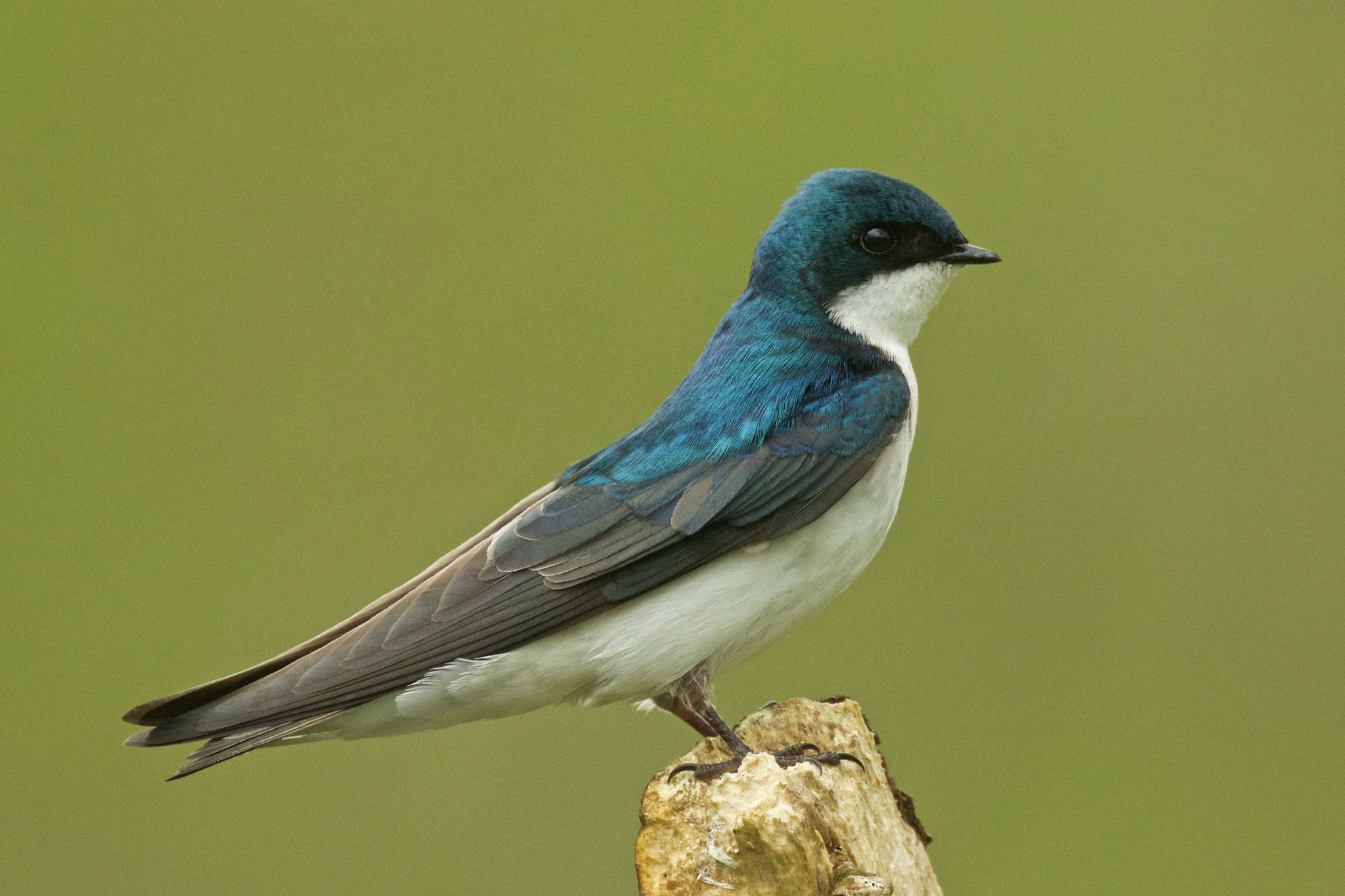When I first moved to the Pacific Northwest 19 years ago, I slowly gathered information on places to go birding within a 20 mile radius of home. One of the most talked about spots was the Hoquiam sewage ponds, so I decided to spend a warm spring day seeing what I could see. When I parked I could see a gentleman sitting in the bed of his pickup, scope on a tripod and binoculars focused on something fast. I walked over to ask him about the birds he was watching and he said he was watching the swallows. I stood next to his truck and we watched together as they swirled around, liquid notes delighting both of us. What a great way to be introduced to the birds of the PNW!
General Description: Tree Swallows are delightful to both watch and hear; their aerodynamic shape is fully displayed and the male’s beautiful, iridescent blue-green back, white undersides, and natural curiosity make them a delightful bird to get close to. Both sexes are 4.7 to 5.9 inches in length, with a wingspan of 11.8 to 13.8 inches, and weighing approximately 0.6 to 0.9 ounces. They are similar to the Violet-green Swallow, but the Tree Swallow’s eyes are within the dark of the head color and they lack the “bow tie” white patch on the rump of the V-g Swallows. The first-year females are similar in plumage to the immature birds, drab, gray-brown above and grayish-white underneath.
Habitat: Tree Swallows prefer open fields near bodies of water, where flying insects are plentiful. During breeding season, they look for cavities in trees or man-made nest boxes. Despite being among the best-studied bird species, we know little of their lives during winter, but do know they choose the same type of habitat for wintering that they occupy during breeding season.
Behavior: These are very social birds, gathering in winter flocks of thousands. They gather at dusk into swirling numbers, circling a marsh or overnighting spot and dropping out into their roosting spots as they circle. They often scoop up insects off the surface of the water, and when not flying, perch on a nearby fence and chatter their liquid notes among themselves.
Diet: Flying insects make up most of the Tree Swallow’s diet, although more than any other Washington swallow, the Tree Swallow eats berries and other vegetative matter when insects aren’t flying. This allows the Tree Swallow to weather cold spells better than other swallows, which in turn allows it to winter farther north. They also eat a lot of berries and vegetative matter which allows them to winter farther north and return earlier in the spring.
Nesting: Tree Swallows are mostly monogamous. They nest in tree cavities, old woodpecker holes, or man-made nest-boxes. The male brings nesting material to the female and she builds the nest cup of dried grasses, weeds, and other plant material, lined with feathers. She then incubates four to seven eggs for 14 to 15 days. Both parents feed the young which leave the nest at 18 to 22 days. The parents continue feeding the young for another three days or more after they leave the nest.
Migration: West coast populations winter into southern California down to Mexico and into Guatemala. They return north in early spring, often arriving in March, before the insects are readily available, and depend on plant material for food until the insects hatch. Most leave to go south in mid-August.
Conservation Status: The population of Tree Swallows has increased slightly in the state of Washington since 1980, but some western birds have been found to have relatively high levels of pesticides. The popularity of nest boxes specifically for swallows has allowed them to find nesting habitat more readily without the usual competition from sparrows, starlings, and bluebirds.
When &Where to Find on the Harbor: Easily found March through mid-August in open fields and wetlands, and more so around the sewage lagoons. They are a wonderful addition to your back yard habitat as they love mosquitoes, Japanese Crane Flies, and other flying insects. Mount a swallow nest box under the eaves on the sheltered north or east side of the house and prepare to be entertained.



